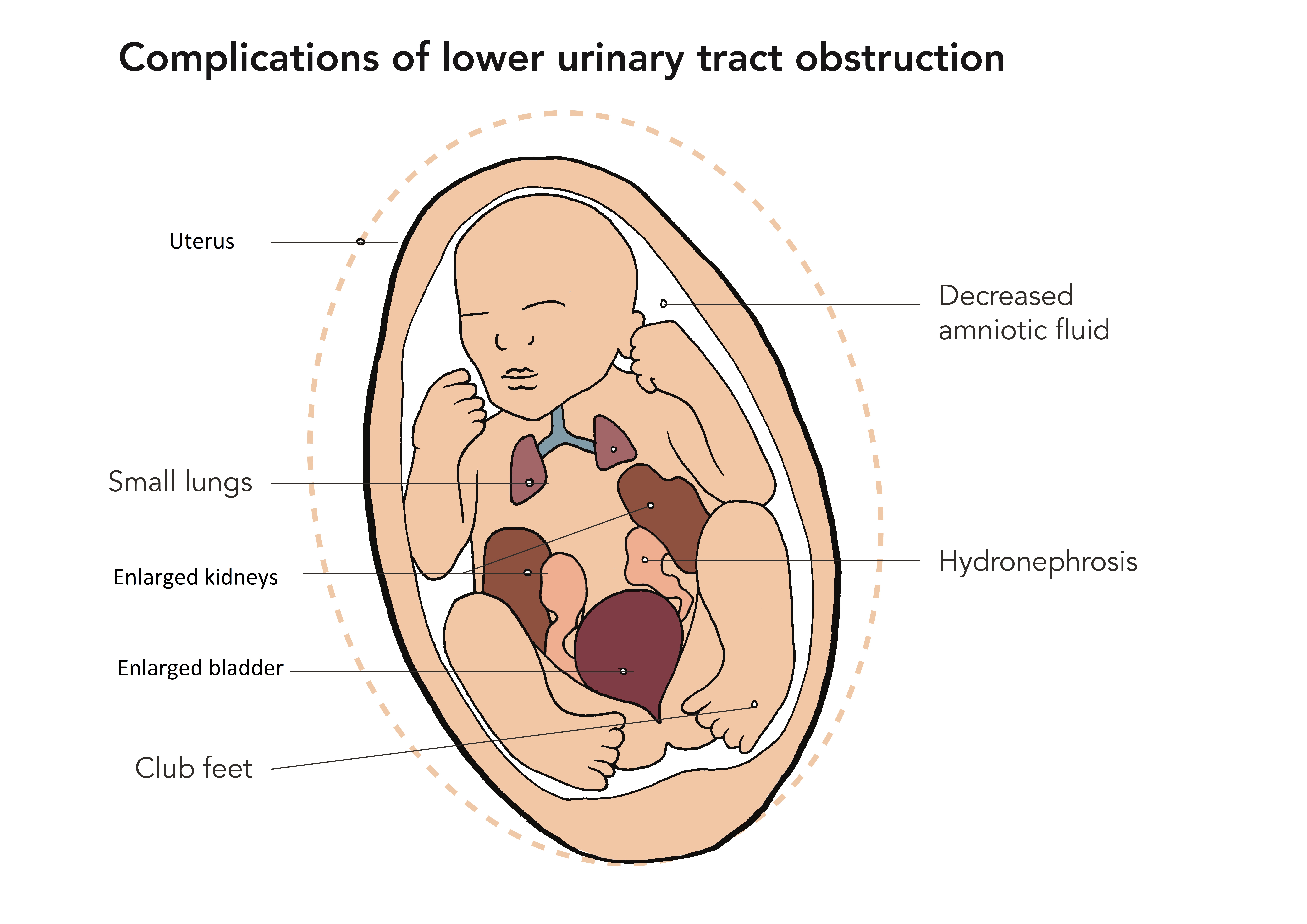Lower Urinary Tract Obstruction (LUTO)
Lower Urinary Tract Obstruction (LUTO)
What is LUTO?
Fetal lower urinary tract obstruction (LUTO) is a rare and serious condition that is caused by a blockage of fetal urination. Because the baby cannot empty the bladder, the baby’s bladder subsequently becomes very large and inflated. Also, because the amniotic fluid is essentially composed of the baby’s urine beyond the middle of the second trimester, the bag of waters dries up. A cascade of secondary effects result in significant morbidity and/or mortality for the baby. This includes problems to the urinary collection system (hydronephrosis) and kidneys (renal dysplasia) attributed to the backpressure from the urinary blockage.
Underdevelopment of the lungs (pulmonary hypoplasia) develops from the lack of amniotic fluid during a critical time of the pregnancy. The cause of fetal LUTO is varied. The most common cause in male fetuses is posterior urethral valves (membrane blocks the flow of urine from the bladder). Oligohydramnios (low amniotic fluid volume around the fetus) may then develop, and is associated with a worse prognosis. In females the most common cause is urethral atresia (a body orifice or passage in the body is abnormally closed or absent).
Other causes of fetal LUTO include but are not limited to obstructive ureterocele (area between the tube that carries urine from the kidneys to the bladder), urethral stricture (abnormal narrowing of the urethra) or agenesis (absence of), persistent cloaca (a defect in which the rectum, vagina, and urinary tract are fused together into a single common channel), and megalourethra (congenital dilation of the urethra). The ultrasound findings of many of these conditions are similar, and it is often difficult to differentiate the cause of the urinary obstruction until after delivery. Because there are different causes of LUTO, the prognosis can be expected to be different depending on the individual diagnosis. However, a major component that dictates perinatal outcome is the secondary complications of the obstruction (renal dysplasia and pulmonary hypoplasia). To prevent these complications, several methods have been developed to bypass the blockage of urine while the baby is still in the womb, with the hope that the back pressure on the kidneys can be averted and the amniotic fluid volume may replenish to allow for more normal lung development.

How is LUTO diagnosed and treated?
You will be referred to a fetal medicine specialist who will assess your baby thoroughly and look for any complications of LUTO. They will talk through all your treatment options which include expectant management, or occasionally active management which may involve draining the urine from the blocked bladder. A procedure called vesico-amniotic shunting aims to place a tube between the bladder and amniotic cavity to enable urine to drain. However, current evidence on the safety and efficacy of fetal vesico–amniotic shunt for lower urinary tract outflow obstruction does not appear adequate for this procedure to be used without special arrangements for consent and for audit or research. More information can be found here.
Very occasionally a fetus with LUTO may sadly be so unwell that the kindest option may be to stop the pregnancy. More information can be found here.
